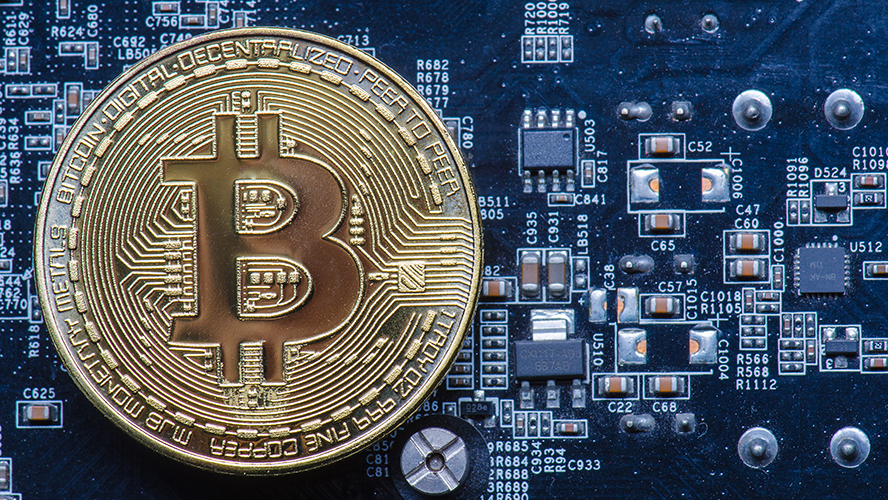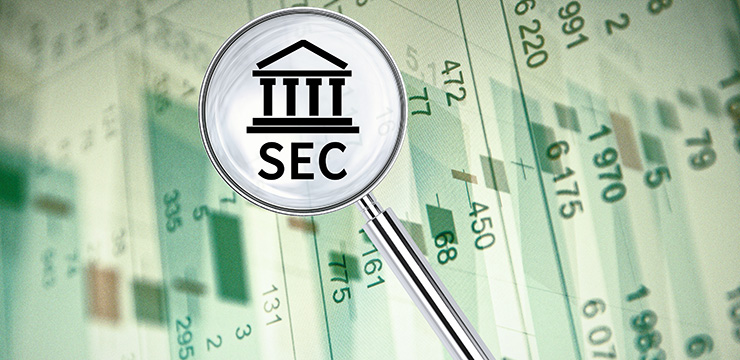The SEC chose a week that saw the price of Bitcoin spike by over $700 in an hour, kicking off a rally reminiscent of the go-go days of 2017, to issue its long-awaited “plain English” guidance for determining whether a digital asset constitutes a “security” under the federal securities laws.
The SEC also unexpectedly released its first no-action letter to a company planning to issue a digital asset without registering the transaction under Section 5 of the Securities Act of 1933 and Section 12(g) of the Securities and Exchange Act of 1934.
Now that the dust has settled, we can start to analyze what all this means for the digital asset industry. Upon review, the Bitcoin rally might have been the more impactful event.

On April 3, a statement entitled “Framework for ‘Investment Contract’ Analysis of Digital Assets” (the “Framework”) was issued by Bill Hinman, Director of Division of Corporation Finance, and Valerie Szczepanik, Senior Advisor for Digital Assets and Innovation; and the Commission’s Division of Corporation Finance issued its first no-action letter regarding digital assets to TurnKey Jet, Inc., a U.S.-based air carrier and air taxi service.
The Framework goes out of its way to caution that it represents the views of the Strategic HUB for Innovation and Financial Technology of the Commission and is not a rule, regulation or statement of the Commission: that the Commission has neither approved nor disapproved its content; and that it is not binding on the Divisions of the Commission. The Framework further emphasizes its limited scope: “Even if no registration is required, activities involving digital assets that are securities may still be subject to the Commission’s regulation and oversight,” for example buying, selling, or trading; facilitating exchanges; and holding or storing digital assets. Thus, the Framework has limited utility from a factual, legal or precedential standpoint. Nevertheless, we expect it to be a significant source document that will be cited by the Commission, practitioners, and courts alike.
On the same day, the Commission’s Division of Corporation Finance issued its first no-action letter regarding digital assets to TurnKey Jet, Inc., a U.S.-based air carrier and air taxi service (the “No-Action Letter”). The No-Action Letter is not binding on the Commission and only applies to the very specific, and restrictive, set of conditions presented in the No-Action Letter request and, therefore, it does not have broad implications for the industry in general. Like the Framework, the No-Action Letter provides little guidance to the industry, but it should be touted as a step in the right direction, albeit a small step.
Though the Framework and No-Action Letter are not as helpful as some might have hoped, both are key developments that shed light on the Staff’s current views regarding the regulation of digital assets and the activities of industry participants under the federal securities laws.
The Framework
The Framework, which the Staff emphasized does not “replace or supersede existing case law, legal requirements or statements or guidance” from the SEC, largely relies on the 73-year-old Howey test for determining whether a digital asset is a security in the form of an “investment contract.” The Howey test is composed of four prongs: (i) an investment of money; (ii) in a common enterprise; (iii) with a reasonable expectation of profit; (iv) derived from the efforts of others.
The Framework succinctly analyzes the applicability of the first two prongs to an offer and sale of a digital asset in three sentences and reserves the other nine pages for the latter two prongs. It is reasonable to ask whether the existence of a common enterprise in an offer and sale of a digital asset is as foregone a conclusion as the SEC evidently believes.
The Framework introduces a term to identify the principal actor or actors in the development or maintenance of a digital asset network, an “Active Participant” or “AP,” broadly defined to include a “promoter, sponsor, or other third party (or affiliated group of third parties).” The activities of the Active Participants are emphasized as critical factors for determining whether a purchaser has a reasonable expectation of profits (or other financial return) to be derived from the efforts of others. This is an expansive reading of the Howey test. For example, under the Framework the following are indicative of reliance by the purchaser of a digital asset on the “efforts of others”: (i) when an AP promises “further developmental efforts in order for the digital asset to attain or grow in value”; (ii) when the purchaser expects that the AP will be “performing or overseeing tasks that are necessary for the network or digital asset to achieve or retain its intended purpose or functionality”; (iii) an AP creates or supports a market for the digital asset; (iv) an AP maintains a managerial role in the project; and (v) when a purchaser would reasonably expect the AP to “undertake efforts to promote its own interests and enhance the value of the network or digital asset.” As an aside, introducing the concept of “Active Participant” suggests that the SEC might be in the early stages of promulgating a refined regulatory scheme for digital currency that focuses on the role of actors whose efforts help maintain or enhance the value of existing currency.
In the section entitled “Other Relevant Considerations,” the Framework spells out how a digital asset can be structured to avoid being considered a security. As a general matter, the stronger the presence of certain identified characteristics, the less likely a digital asset would constitute a security under the Howey test. These characteristics include (i) the network is fully developed and operational; (ii) holders of the digital asset are immediately able to use it for its intended functionality; (iii) the good or service underlying the digital asset can only be acquired, or more efficiently acquired, through the use of the digital asset on the network; and (iv) the digital asset is marketed in a manner that emphasizes the functionality of the digital asset. However, some of the other characteristics cited would pose challenges for “traditional” digital asset issuances, including: (i) prospects for appreciation in the value of the digital asset are limited, e.g. the design of the digital asset provides that its value will remain constant or even degrade over time; and (ii) if the AP facilitates the creation of a secondary market, transfer of the digital asset may be made only by and among users of the platform.
The Framework briefly discusses when a digital asset “previously sold as a security” should be reevaluated at the time of later offer or sale. Relevant considerations in that reevaluation include whether purchasers “no longer reasonably expect that continued development efforts of an AP will be a key factor for determining the value of the digital asset.” The broad definition of AP is especially troubling when coupled with the Framework’s broad list of examples of continued involvement by the AP in the development or management of the network or digital asset because it arguably could apply to almost any project in the industry.
This discussion is largely a restatement of Director Hinman’s oft-cited speech “When Howey Met Gary (Plastic),” and is generally not helpful in addressing the great leap required to transition from a product developed by a group of identifiable individuals to a “de-centralized” organization. Note that the Framework does not address, among other things, the status of SAFTs and the issuance of tokens thereunder. It also says nothing about projects where sale of tokens are restricted to non-U.S. buyers, and U.S. residents later wish to use the tokens.
No-Action Letter
In the No-Action Letter, the Division of Corporation Finance indicated that, subject to specified conditions, it would not recommend enforcement action to the Commission if TurnKey Jet offers and sells its tokens without registration under the Securities Act and the Exchange Act. The No-Action Letter is instructive because it provides an example of the narrow range of activities that, under the Framework, would exclude a digital currency from treatment as a security. Some of the key features of the digital asset represented in the No-Action Letter request include:
- TurnKey will not use any funds from the token sale to develop its platform, network, or application, and “[e]ach of these will be fully developed and operational at the time any tokens are sold.”
- TurnKey’s tokens will be immediately usable for their intended functionality when they are sold.
- The seller must restrict transfers of the tokens to its proprietary wallet.
- The token’s marketing focuses on the functionality of the token and not its investment value.
- The tokens will be priced at US$1 per token “through the life of the program” with each token essentially functioning as a prepaid coupon for TurnKey’s air charter services.
While TurnKey can celebrate being the recipient of the first no-action letter regarding the registration requirements of the Securities Act and the Exchange Act applicable to digital assets, the highly restrictive covenants it must abide by to avoid registration are in conflict with the characteristics of most ICOs and, therefore, the No-Action Letter provides little relief to the typical industry participant.
Although the Framework and the No-Action Letter largely reiterated what digital asset market participants already knew, taken together they have opened the door to further constructive discussions with the Staff that, hopefully, will produce more clear-cut guidance based upon the analysis of specific cases.






